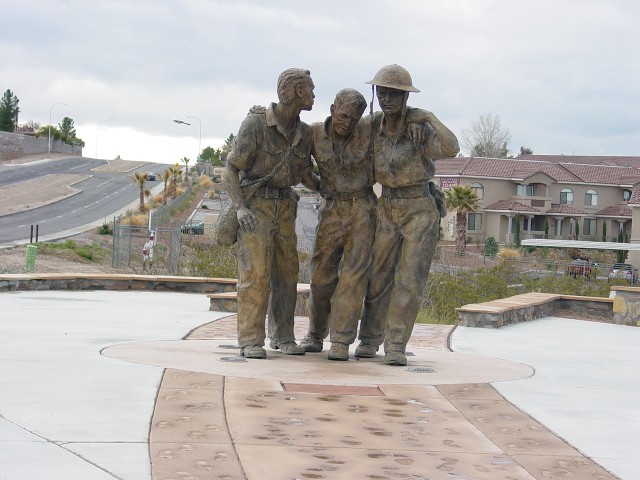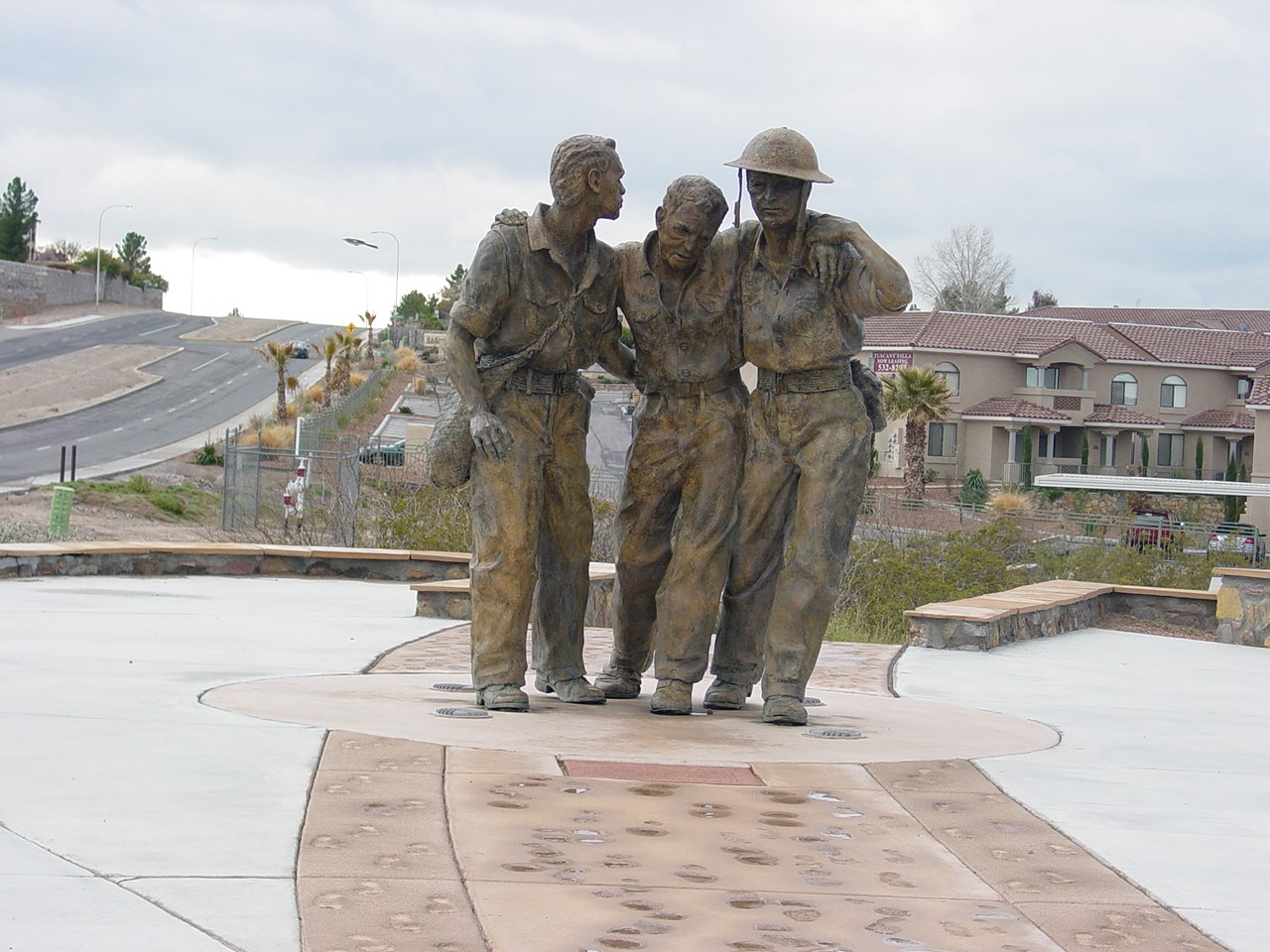
FORT WAINWRIGHT, Alaska - World War II battles in the Pacific against Japanese forces were fierce. Americans had to fight not only the tenacious enemy, but the environment of the area.
A win in the Philippines was critical to stopping Japanese aggression in the South Pacific, so despite the problems, American and Filipino allies continued their fight to keep control of the island nation from the Japanese. The fight for the islands was hard-fought.
The Philippines Campaign was plagued by a low budget, with little money for even uniforms and housing for the American Soldiers. Furthermore the heat and humidity caused skin problems and other tropical diseases that made fighting there even more miserable.
Nearly 70,000 American and Filipino Soldiers became prisoners of war on April 9, 1942, when Bataan fell to the Japanese.
The soldiers serving on this South Pacific peninsula had been cut off from supplies, food and ammunition and were nearing starvation.
When Gen. Douglas MacArthur left Bataan for service in Australia, Lt. Gen. Jonathan M. Wainwright became the senior field commander of US and Filipino forces in the Philippine Islands. Holding off a major Japanese assault in January earned the American-Filipino forces the nickname "Battling Bastards of Bataan."
The Japanese attacks resumed in earnest in April.
President Franklin D. Roosevelt authorized Wainwright to continue the fight from the island of Corregidor or agree to whatever terms he thought best. Wainwright chose to continue fighting with his men, despite advice that he leave. He fought alongside his men, often visiting the front lines.
After fierce fighting, Bataan fell on April 9, 1942.
Thus began the Bataan Death March - a 65-mile forced march to a prison camp through the unbearable heat and humidity of the South Pacific island.
The Japanese randomly beat the POWs, often denying them food and water. They executed those who fell behind, and tortured them with the "sun treatment" - forcing the captives to sit silently in the humid April sun without water, shade or helmets. Some of the POWs had to dig their own graves, then were buried alive. The Japanese used others for target practice.
Wainwright and 11,000 survivors held on in tunnels on the island for another month after the defeat. Without food or sleep, their hopes of survival were slim.
On May 5, Wainwright sent MacArthur a letter informing him that air and artillery bombardment from the Japanese were strong, and he expected the Americans and Filipinos would not be able to hold out much longer. When the Japanese landed on the island, Wainwright called for terms.
More than 1,000 American Soldiers and nearly 15,000 Filipinos did not survive the Bataan Death March. Many more died in the POW camps.
Wainwright and his troops joined the Death March survivors at prison camps in the Philippines, Formosa and Manchuria.
Released from the POW camp after more than two years, Wainwright witnessed the Japanese surrender aboard the USS Missouri in September 1945, and then returned to the Philippines to receive the surrender of the local Japanese commander.
Called the "Hero of Bataan," Wainwright did not see himself as a hero, but as a failure because he had surrendered. The people and the government of the United States thought differently, however. Wainwright was awarded a fourth star and the Congressional Medal of Honor after the Japanese surrender.
His Medal of Honor citation reads:
"Distinguished himself by intrepid and determined leadership against greatly superior enemy forces. At the repeated risk of life above and beyond the call of duty in his position, he frequented the firing line of his troops where his presence provided the example and incentive that helped make the gallant efforts of these men possible. The final stand on beleaguered Corregidor, for which he was in an important measure personally responsible, commanded the admiration of the Nation's allies. It reflected the high morale of American arms in the face of overwhelming odds. His courage and resolution were a vitally needed inspiration to the then sorely pressed freedom-loving peoples of the world."
The survivors of the Bataan Death March did not break under the cruelties of the Japanese captors. They did not break under the tropical heat and humidity and the physical toll it took on their bodies. They did not break under more than three years in prison camps.
The Bataan Memorial Death March is held in March every year at White Sands Missile Range, N. M., to honor the men forced to make the devastating march in 1942. Some of those men were members of the New Mexico National Guard's 200th Coast Artillery.
The memorial march has grown from about 100 people in 1989, its first year, to more than 4,000. Marchers include members of all branches of the armed forces and civilians. Special guests at the memorial march have included veterans of the original march.
Gen. Jonathan Wainwright died in 1953 and is buried at Arlington National Cemetery. Ladd Air Force Base was turned over to the Army and renamed Fort Jonathan M. Wainwright on Jan.1, 1961.

Social Sharing